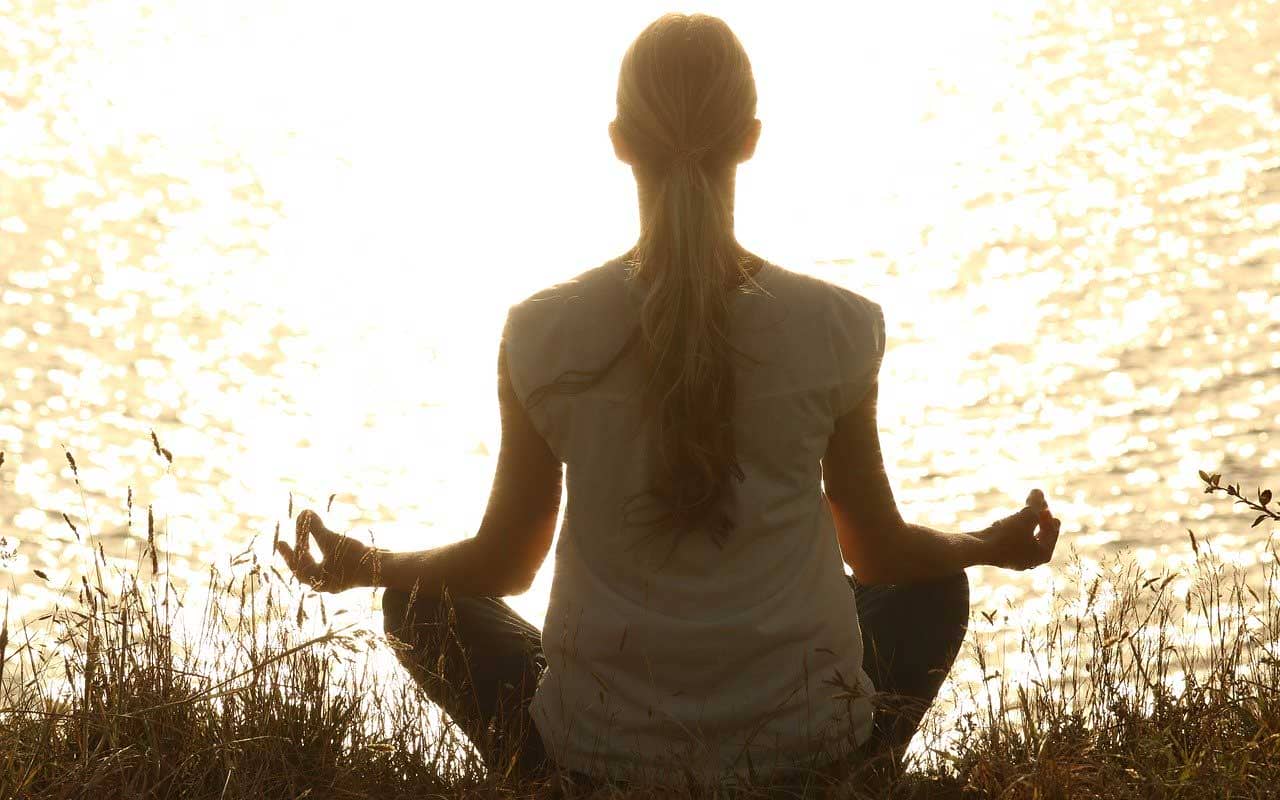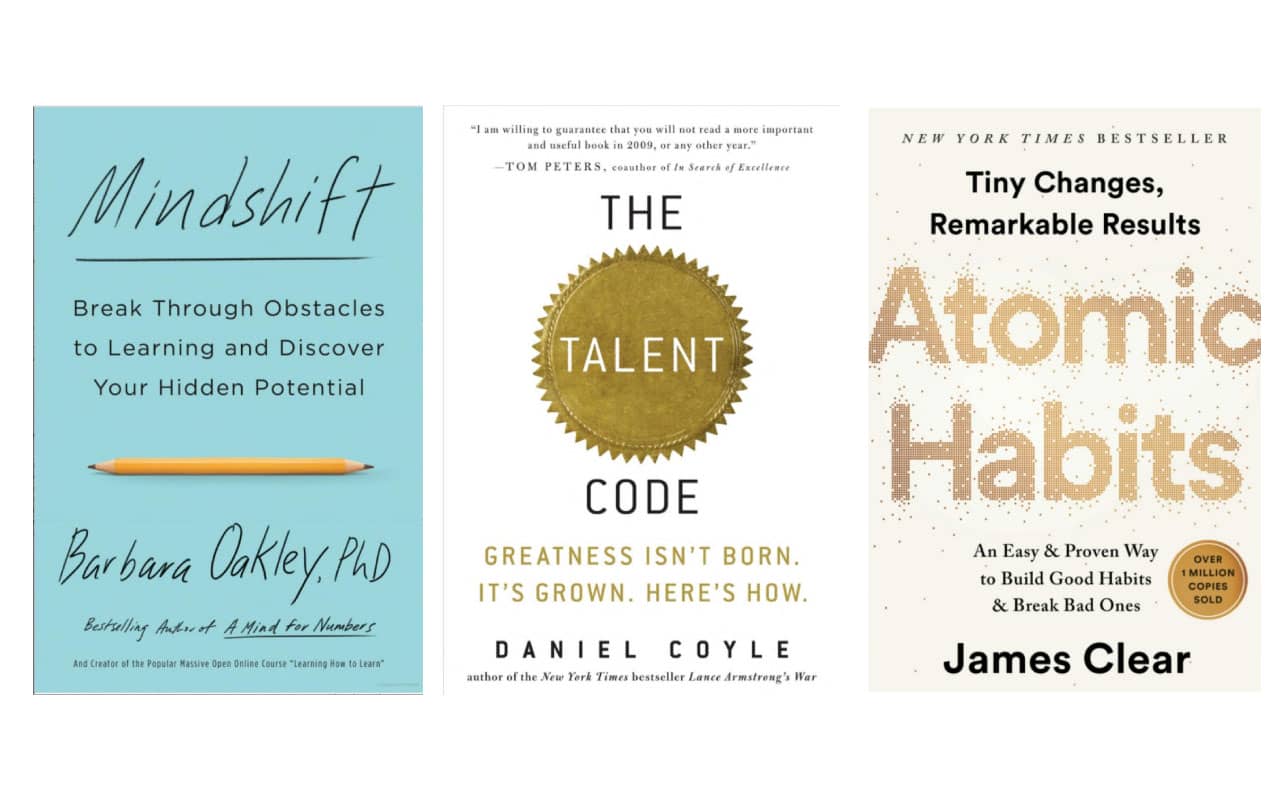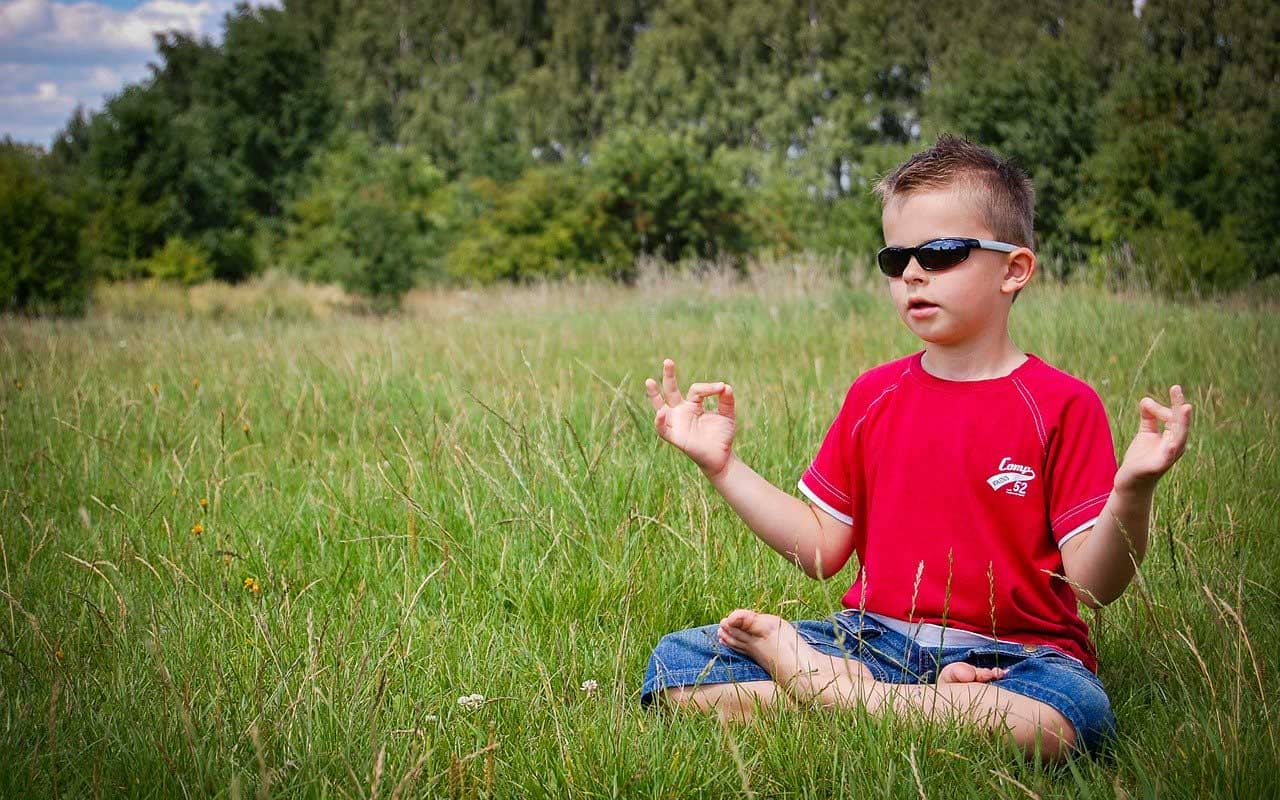Podcast: Download
Subscribe: Apple Podcasts | RSS
 Do you have a hard time focusing and wonder if concentration meditation will help?
Do you have a hard time focusing and wonder if concentration meditation will help?
Right now, times are tough. There are hundreds of news stories, social media posts, and other distractions all vying for your attention — all screaming (loudly) about how important they are.
Even before the world turned upside down, you already had a hard time concentrating. Then along came a pandemic and ruined any chance of being able to sit down and concentrate on anything important.
But what if I told you your concentration is already 10 times better than you think it is?
Chances are, you just haven’t learned how to pay attention to what concentration really is. So in today’s post, I’m going to break it all down — and I’ll teach you a number of exercises you can use to boost your focus.
You’ll learn how to use concentration meditation, the benefits, and what shortcuts do (and don’t) work.
Here’s what this post will cover:
What is Concentration, Exactly?
Benefits of Concentration Meditation
Examples of Concentration
Concentration Shortcuts
How to Get into a Flow State
Types of Concentration Meditation
1. Object Focus Meditation
2. Word Focus Meditation
3. Moving Meditation
4. Breathing Meditation
5. Number Skipping Meditation
6. Chanting Mantras
7. Biographical Thought Control Exercise
8. Movie House Exercise
9. The Music Album Exercise
10. Neti Neti Exercise
11. Flight of the Garuda Exercise
12. Memory Palace Recall Exercise
Meditation and the Framing Effect
Concentration Meditation FAQs
Ready? Let’s get started.
First, I’ll let you in on a little secret: I could not live without concentration, and neither could you. Here’s why exercises like these have been so important and helpful for me:
And get this:
Memory will improve meditation — and meditation will improve memory.
So let’s begin with a definition.
What is Concentration, Exactly?
When you think about the word concentration, what comes to mind?
It probably brings up images of someone super focused. Maybe they’re reading a long and complex novel, studying for a big exam, or doing a task that involves being really careful. Or maybe you think about visualization meditation as the ultimate way to sharpen your concentration.
Let’s look at four aspects of concentration you might not have considered.
Focus All Your Attention
The dictionary says concentration is the action or power of focusing all one’s attention. The two most important words in that definition are “all” and “attention.”
So what does it mean to have the action or power of all one’s attention in concentration?
Let’s start thinking about concentration by thinking about it as circles. Why? Because the word “concentration” comes from “concentric.” That means having a common center. And this is why you’re probably more concentrated than you think.
It’s a matter of which circle or sphere of concentration you’re currently in.
The meditation for focus and concentration you’ll learn later in this post is part of a tactical strategy guide. You’ll learn how to go out and try different things. And you’ll see (as I mentioned in the opening) how you’re already much further ahead than you think you are.
This post and the meditations and exercises you’ll learn will help you accelerate your progress with concentration very quickly.
Be Aware of Your Awareness
If we dive even deeper into this idea of concentration, it can also be a careful mental application of your awareness itself — not just attention. When you’re aware, you’re already concentrated.
How aware are you of your awareness? If you were to give it a number out of 100, what would it be? 80 percent aware? 20 percent aware?
Do you even know if you’re aware of your awareness… or not?
The reason I ask you to think about this is, arguably, all we are is awareness. Therefore, we’re always 100% concentrated. We’re already there.
If you’re feeling a little confused or like this concept is a bit far out there, I’d encourage you to read a book called Standing as Awareness: The Direct Path by Greg Goode. The book can help you wrap your mind around this concept — it’s eye-opening when you start to understand what awareness is, and how it ties into concentration and focus.
Moreover, my research has revealed that memory training has been about realizing total presence since at least the 1500s. I talk about this in-depth in a mindfulness YouTube series I’m developing called The New Art of Memory.
Shift Your Understanding
A close mental application of concentration, paired with the meditations we’ll do later, require a shift in understanding.
Because concentration is only as good as your awareness of awareness itself.
And awareness of consciousness is not just that, but it’s awareness of consciousness plus something – which is everything in it. Everything that is consciousness right now.
And you can zero in and focus, or you can zoom out and be much wider, and you can think about things as a kind of oneness.
In some sense, this is what you want to get to. You want to live in the zone. You want to be so focused, so hyper-aware, that you’re just blissful every single moment — because you have this oneness with the present moment.
As a tactic for creating laser focus that stands the test of time – and hopefully also improves and grows in intensity over time – you have to understand it as awareness.
And if you want to learn even more, Greg Goode also wrote a book called The Direct Path, which has even more activities. These will really help you exercise your focus and concentration muscles.
Don’t Lose Yourself in the World
When I think about how to define concentration and attention, I think of a line from Eckhart Tolle’s book Stillness Speaks:
“When you lose touch with inner stillness, you lose touch with yourself. When you lose touch with yourself, you lose yourself in the world. Your innermost sense of self, of who you are, is inseparable from stillness. This is the ‘I am’ that is deeper than name and form.”
This is what we’re after when we want to increase our concentration. We want to not lose ourselves in the world. We want to be that observer of all that is in the world.
Stillness is being the witness to all that is in our awareness as we are standing as awareness. Eckhart Tolle says that “Stillness is your essential nature,” and you can get there with a bit of time and practice.
There are all the kinds of things you will achieve when you understand that concentration is stillness — and when you are, as Greg puts it, standing as awareness.
All focus. All concentration, in that moment, on a singular action, a singular movement. This is what you already are. You just have forgotten it.
Next, let’s look at the benefits of meditation for concentration and focus.
Benefits of Concentration Meditation
Concentration is stillness. It allows you to take a drifting mind and bring it back to center, to your essential nature.
This means you don’t really have to do much to get yourself back there, but it’s still helpful to understand how you can “stand as awareness.” When you get knocked down, to know how to come back to center so you can work around irrelevant thoughts.
Neutralize Your Thoughts
You can’t totally eliminate distracting thoughts… but you can turn them off.
When you’re able to change the form of their energy, you can – as the Atma Bodha says – change thoughts through practice:
“Constant practice of self-knowledge neutralizes ignorance as a base neutralizes an acid, purifying the individual self.”
In this case, ignorance is not being in stillness. Not being able to find your way back to center because you’re not practicing self-knowledge.
One of the things to focus on here is a Zen principle: finding the starting point is always the practice. You just have to find the start — because always being at the starting point is the goal.
The wave of our focus and our concentration is always changing. So how can we be constantly in search of the starting point?
Make Motivation Irrelevant
When you understand that concentration is stillness, you eliminate the need for motivation.
A lot of people say they’re “not motivated” — they’re constantly waiting for inspiration or motivation to strike. But motivation isn’t real. It isn’t a strategy.
And motivation is never going to just randomly show up on a Tuesday.
What would better serve you is to get past motivation. And the way you do that is to realize you are already what you seek.
It’s like this line from The Flight of the Garuda:
“The nature of mind in its purity is like a stainless crystal ball. Its essence is emptiness, its nature is clarity, and its responsiveness is a continuum. In no way, whatsoever, is the nature of mind affected by samsara’s negativity. From the first, it is Buddha, ‘Trust in this.'”
Only a Buddha knows a Buddha — you are already awareness. You are perfect stillness. But ignorance of this quiet moment, the stillness inside you, throws you off seeing what’s right in front of your eyes.
Instead, you clamor for motivation and get attached to the idea of needing to be motivated in order to accomplish anything.
Get Centered
When you get to the point where you realize that concentration is stillness, your memory will improve.
No matter what’s going on in your life, you are able to find stillness. Whether you have family in a COVID-19 outbreak area who can’t find masks or you have a garden-variety bad day, practicing concentration meditation helps you focus.
You don’t need to be motivated — because motivation is irrelevant when you have true concentration. And then your memory improves. You find your way back when you lose your place. You find your way back to the starting point we just talked about.
It’s no longer an intellectual thing. Instead, it’s something you live. You live it because it’s the only thing that exists. Because you’re so concentrated on it.
Stop Forgetting
When you start to live this type of awareness, you have access to a broad range of techniques that help you get back to center.
You stop forgetting what you need to do next. Have you ever had that experience where you have so many things you need to do, but you don’t remember what it was that you need to do next? That goes away.
We can talk about oneness, but in the oneness there are many techniques. One is the most dangerous number — and that’s why there are 12 different techniques included in this post for you to explore.
Destroy Boredom
So many people say they’re struggling with boredom. But boredom simply isn’t necessary — it’s a choice.
If you want a simple way to get rid of boredom, I would suggest picking up some “bring gratitude” cards — they have a number of exercises to help you understand how blessed you are.
If you have internet access, you have no right to be bored. Instead, get yourself some gratitude for your life and kick boredom to the curb.
Next, let’s look at some direct benefits of concentration meditation.
Short- and Long-Term Memory Boosts
We’ve covered a number of the benefits so far, but I want to talk about a few that will help you as you build focus and concentration.
There are both short- and long-term memory benefits that come along with regular concentration meditation practice. You’ll also discover the nature of your focus — and what breaks or impedes it.
Restore Your Focus
As you continue to meditate consistently, over time you’ll start to notice your awareness is segmented.
It’s like the concentric circles we talked about at the beginning of this post. You’ll be able to get back to certain circles in your awareness, see what breaks your concentration, and then – much like a Zen archer – shoot an arrow through the thing interrupting you.
And even if you get impeded, you’ll be held up for less time — and less often. The circle continues, and you’ll grow your gratitude and be able to take more risks.
Tame the Monkey Mind
So many people have issues with monkey mind. I’ve had years of suffering from it, and know it’s no fun. Mindfulness meditation teachers often describe the mind as a scorpion-bitten, drunk monkey — it’s that hard to control it without dedicated practice.
When you do shoot those Zen-arrows, you want them aimed in the right direction, and at the time of your decision.
In an ideal world, you can tame the monkey mind and think what you want to think when you want to think it.
Make Better Decisions
When you are able to re-perceive, it helps lead to better decisions.
But what does that mean? To answer, let’s take a look at a 2017 study by Elisabeth Norman, Metacognition and Mindfulness: the Role of Fringe Consciousness.
She says (lightly edited):
Over the last years, there has been an increased interest in the relationship between mindfulness and metacognition… The relevance of metacognition to mindfulness can be illustrated by the fact that heightened attention and an open orientation to one’s own mental events, which are characteristic of mindful states, both require that the person monitors and controls aspects of their ongoing cognitive activity, which are the two core functional mechanisms of metacognition…
[One of the referenced studies] specifically linked mindfulness to metacognition, arguing that the process of mindfully attending with openness and nonjudgementalness leads to what is referred to as reperceiving. This involves a shift in perspective, where thoughts, feelings, and sensations that were previously “subject” now become “object,” in the sense that they are experienced more independently of one’s expectations, experience, or attitudes. This involves a more flexible attitude to one’s experiences. The contrasting state of mind would be mindlessness, during which the individual is highly context-dependent, ignorant to novel aspects of their environment, and over reliant on learned schemas and scripts.
When you are able to shift your perspective, you can experience life away from the structure of your likes and dislikes, your experience, and any assumptions that might lead to poor choices.
Improve Willpower
I don’t want to get lost in the weeds of free will — but I do want you to understand that when you understand the difference between choice and selection, you will have a greater ability to have acts of will.
Choice is an illusion. There’s no power to choose. You are born, you don’t choose your parents, and then karma takes over. Then you constantly face the pressures of the laws of reality — you have to eat, you have to breathe. There’s no choice involved.
Choice creates great misery.
At the same time, you’ll have many selections to make. The quality of the selections you make has a lot to do with the field of your awareness — how big it is, how well-practiced, and how cultivated through constant study and implementation.
So you get to select from a field of potential things, not choose. And you need to select better, to use acts of will in order to select.
The important benefit comes when you can see the distinction and accept the things you can’t change. This allows you to focus instead on using your acts of will to select better in life, rather than reacting when things appear in your field.
Cultivate Patience
I always think about the story in Eckhart Tolle’s The Power of Now where he talks about how to react when you’re waiting and someone doesn’t show up on time. Instead of being angry they’re late, you could just say, “Oh, I wasn’t waiting for you. I was just enjoying being here. Just being.”
Concentration meditation will help you achieve that attitude. By paying more attention to the current moment rather than getting upset about someone else’s behavior, you get to enjoy whatever is happening in the moment.
There are a bunch of brain chemicals that switch on when you meditate — in a podcast episode with Daniel Kahneman, Sam Harris calls it “heroin-level meditation.” I don’t know if that’s the best analogy for it, but it certainly feels great.
There is some research indicating the chemicals produced when you meditate consistently are similar to the effects of taking Psilocybin mushrooms or Peyote.
And having taken a bunch of hallucinatory drugs in my day, I can tell you there’s definitely a relationship. But my recommendation – if you want to be high all the time – do this instead. Do these concentration exercises regularly and you don’t need to take drugs.
Mental Minimalism
You might know what minimalism means in terms of the amount of stuff you own, but what does mental minimalism mean?
It comes from removing thoughts that do not serve, and having the courage to remove objects.
One of the reasons people have so much junk in their minds is because they have so much junk in the environment around them. It’s very hard for some people to get rid of clutter, and the two go together.
But if you have the courage to remove clutter from your life, you will likely also have fewer thoughts and much more freedom.
Higher-Order Focus
The last benefit of concentration meditation we’ll discuss today is you’ll probably spend much more time on higher-order projects.
Instead of spending your life in death-by-1000-papercuts mode, you can spend time and mental energy creating a vision for your life. Then, once you have your life vision in place, you can set objectives and organize your time such that you actually achieve those goals.
The more you meditate, the more likely you’ll see these higher-order topics, spend more time on them, and actually gain traction in your life.
Next, let’s look at a few examples of what concentration might look like in the real world.
Examples of Concentration
Let’s take a quick peek at a few examples.
In the Zone
From time to time, everyone feels like they’re “in the zone.” This means being in the task-positive network of the brain, as opposed to the default mode network.
The default mode network is characterized by “me” in the future or past. Instead, the task-positive network means being fully present in the moment — you’re absolutely in the here-and-now and loving every minute of what’s happening.
For me, this happens when I’m up on stage playing music. I was in the zone every night, because as soon as you count off there’s no stopping until the song is over. We were there with the audience, seeing their reactions, and waiting for the next song to start.
Check Your Strings
In the tennis world, this happens when a player makes a mistake or misses a shot and then wanders off and checks the strings on their racquet.
What might seem funny to an outsider is that they have the most expensive racquets in the world and yet they still check to make sure there’s nothing wrong with their equipment. What you might not know is it’s a way for the player to remove their mind from the thing that just happened.
It’s another example of concentration where you correct yourself to get back on course. When you get knocked out of the zone, how can you get back into it quickly? Instead of beating yourself up and thinking, “Oh, I always make this mistake. I’m so stupid!” you get the chance to stand up, dust yourself off, and get back in the zone.
If you think about being in the zone as the middle point in a circle, how do you get knocked out of the zone? You don’t. Instead, you get knocked one concentric circle back — you’re not totally out of the circle. It’s an opportunity to collect yourself and your concentration and get back to center.
You’re never not concentrated. If you make a mistake and your focus shifts to your reaction to the mistake, you’re still 100% concentrated. Your awareness is now totally focused on the mistake.
The metacognitive skill becomes how to bounce back to the center of the circle.
Vicarious Experiences
A great illustration of a vicarious experience is when you’re so engrossed in watching a movie it’s like you’re right there with the main characters.
For example, if you were watching The Matrix and you identify so strongly with Neo you feel it when he gets punched. Or when Trinity is in a tricky situation where she needs to run away and can’t — and your psycho-motor responses react with sweaty palms or a pounding heart.
In real life, we can (and often do) construct this kind of galvanic response in our bodies. When you get caught up in a mistake and can’t stop thinking about it, that’s a vicarious experience of the past.
Mindfulness Meditation
Just showing up to meditate is already an example of concentration. It’s like the old Woody Allen line, “eighty percent of success is just showing up.”
You don’t have to do it perfectly. Just show up. Even if you try just one of the exercises included in this post you’ll learn so much about yourself.
And if you haven’t read it already, take a read through my post called How to Improve Concentration and Memory Buddha-Style. There’s a ton of science about the benefits of meditation and some practical advice about how to get started.
Now let’s talk about some concentration shortcuts, and why they don’t work.
Concentration Shortcuts (That Don’t Work)
Sorry, but there’s no shortcut to concentration and focus!
The exercises later in the post are not shortcuts — this is something where you need to be all in. My dad used to say, “[censored] or get off the pot.” And that’s how this is going to work. If you want progress, you have to do the work.
Let’s take a look at the claims some people make about ways to shortcut your way to concentration.
Supplements
One of the so-called shortcuts to gain focus is to take a bunch of supplements. In a post entitled 9 Nootropics to Unlock Your True Brain, Dave Asprey contradicts himself quite a bit, but he nails it by the end.
The first mistake in the post is that there’s such a thing as a “true brain.” I know it’s just semantics, but the brain is a living breathing thing. It changes with every breath we take and every pump of our hearts. So a “true brain” doesn’t exist, insofar as your brain is flexible in the moment.
If you’re supplementing your brain, at some point it will need to be supplemented again. I think this is an issue, because – as Dave points out – supplements can lead to depression and changes in character. Add in the purity and quality issues inherent with supplements, and you could end up killing yourself.
And so he gives the solution: fix your diet first. A lot of people wouldn’t need supplements at all if their diets were right. In many cases, a healthy and complete diet will give you the vitamins and minerals your brain needs.
You should also aim for a sattvic diet – one that keeps you in a headspace of clarity and contentment – and avoid rajasic and tamasic foods. Rajasic foods irritate you, and tamasic foods make you lazy and slow.
The key thing to remember is: there’s no shortcut to the perfect diet. No one person has the answer for you. It’s up to you to try things out, test how they work for you, and test some more. It took me six months of this kind of testing to figure out my current diet.
A lot of people ask why there’s no Magnetic Memory Method memory supplement. The main reason is I haven’t found any type of supplement that helps more than drinking a glass of water. Seriously! Research shows you can improve your verbal memory by drinking water.
Doing Nothing
Unfortunately, doing nothing is a shortcut many people try. And, as you might imagine, it doesn’t work.
But why do people do nothing? Because it’s the easy path. And when it comes to memory, concentration, and focus many people are happy to just get by.
Doing nothing, changing nothing, has just as many wear-and-tear issues on your body as anything else. Your posture can be destroyed by staring at your cell phone, in kyphosis, all day long — or by laying on the couch all day.
But some people will still take this path.
Inconsistent Practice
Consistency is key if you want to maintain sustained focus for long periods of time and achieve flow.
Half the battle here is making sure you have habits intact. At the end of the day, there are lots of ways to get your habits going, flowing, and growing. I would suggest you forget about other people’s opinions and just do what works for you.
Here’s a list of my favorite habit-formation resources.
Form Habits Like the Pros
Let’s take a look at three of my favorite books on the topic.
Mindshift: Break Through Obstacles to Learning and Discover Your Hidden Potential — by Barbara Oakley
This book is great because it not only teaches you about how to get habits going, but also teaches why habits are so hard to start in the first place. (It all has to do with the insular cortex in your brain.)
There’s also an in-depth review of the book here on Magnetic Memory Method if you want to learn more.
The Talent Code: Greatness Isn’t Born, It’s Grown — by Daniel Coyle
This is one of my favorite books. It was one of the first places I read about dopamine, myelin, and all of the opioid receptors.
There’s a way to grow your greatness and Daniel spells it out clearly. Your brain is a garden and it’s as simple as growing it.
Atomic Habits — by James Clear
James is an author I interviewed for the podcast a couple of years ago. In the interview, you’ll hear a discussion about how to write a book in a habitual way — and it’s the book I’m currently getting into audiobook format.
Now let’s look at a few ways you can get “in the zone.”
How to Get into a Flow State
Remember, a flow state is the level of focus and concentration where time seems to disappear and you get so absorbed in your work nothing else exists.
The scientific term for this state is called an autotelic experience.
Autotelic Flow
Ideally, doing something becomes its own reward. We want to be switched on. We don’t want to think about it — we just want to show up and have flow happen.
Mihaly Csikszentmihalyi says:
“An autotelic person needs few material possessions and little entertainment, little comfort, or power, or fame because so much of what he or she does is already rewarding. Because such persons experience flow in work, in family life, when interacting with people, when eating, even alone, with nothing to do, they depend less on external rewards that keep others motivated to go on with a life of routines. They’re more autonomous and independent because they cannot be as easily manipulated with treats or rewards from the outside. At the same time, they are more involved with everything around them because they are fully immersed in the current of life.”
I believe every single one of us can become either an autotelic person or get better at it. But what if you have a really hard time getting into flow?
How Do You Induce a Flow State?
We talked earlier about vision statements, creating actual milestones, and scheduling your time. That’s part of it — build it so you can get to work and focus on those things. Concentration meditation will also help you get into a flow state.
As you’re working to get there, you might also consider self-hypnosis.
There’s a long story in my past about not wanting to write my Ph.D. dissertation — it involves getting really drunk and busting my head open on a kettlebell (resulting in an ER trip and stitches) and led to me getting into self-hypnosis to get my dissertation written.
I already had my National Guild of Hypnotism (NGH) certification, so I sat down and made a recording to help myself get the dissertation done. And while I won’t get into the ins and outs of how to hypnotize yourself, it is a type of concentration meditation.
If you go and get hypnotized by somebody else (if they know what they’re doing and are any good at it) it’s also a kind of concentration meditation. We just use different words.
The difference is – as the Amazing Kreskin says – “it’s persuasion.” Persuasion is nothing more than the acceptance of a suggestion. Similarly, hypnosis is nothing more than acceptance of a suggestion.
We’re going to do a lot more about meditation for concentration and focus moving forward. I created a Facebook page about the topic, and I’d love for you to join us there.
Next, we’ll look at the different types of concentration meditation. Grab a piece of paper or your favorite note-taking system and let’s get learning!
Types of Concentration Meditation
Everyone needs to explore a range of meditations and ideally have more than one kind in their “meditation stack” for the best results.
A 2017 article explores some interesting gender considerations to keep in mind. And since there’s no single meditation that works for everyone, we’ll learn about 12 different approaches you can take.
Some of these examples are not really meditations but rather exercises to help you concentrate.
If you want to see examples of these meditations in action, you can check out this YouTube Livestream.
1. Object Focus Meditation
This is a visualization training where you focus on “an object.”
We could get really nerdy about what an object actually is — because pretty much everything that appears in your awareness is an object. And because it appears to you, you are not it.
A higher-order “focus on objects” meditation would be to focus on the object of perception as it appears to you. The Waking Up app from Sam Harris has a lot more like this.
But we can also keep this meditation really simple. Here’s an example:
Hold a cup in your hand, look at it, and then ask…
“Where in my consciousness, where in my awareness, where in my concentration, is this cup?”
You can then do the same thing with your eyes closed, or with the cup sitting somewhere else in front of you. You can also get different cups and compare them. Ask yourself where the color on the cup is, what the color is, and what divides the color from the space around the cup.
As you focus on the cup, you may also become aware of how there’s so much color around you. The objects are not the color — but they’re also not not the color.
As you start to see the distinctions and notice your mind has this great filter, you may begin to see how your concentration is a thing that’s always on.
And whether it’s a cup, a playing card, a coin, or some other object, when you focus on an object in your environment you can make endless inquiries about it.
- Where does the sensation of the object and your hand begin and end?
- Where does my awareness of the object begin?
- Where is the object?
- What does it feel like against my skin?
- What does my skin feel like?
- How did this object come into my possession?
- Are there any stories associated with this object?
You might decide to journal your observations about the object, allowing yourself to follow the thread of observations as you think about its many layers.
If you’ve taken the free course at MagneticMemoryMethod.com you know there are a number of approaches like the candle exercise, the apple exercise, the corner exercise, and the negative space exercise you can use for this type of meditation.
2. Word Focus Meditation
Another type of concentration meditation is to focus on words or word parts.
This is the great memory tradition of the West, to understand the role of words as the core of how we can memorize things quickly. In this way, we can concentrate and meditate on the nature of language.
We’re essentially back to object meditation but more fluid and with a different focus. This type of meditation has a strange characteristic of being constantly moving — because words printed on a page may move around in your mind in a way they don’t move around on the page.
One guy I find really fascinating is Harry Kahne, who had the interesting idea of “multiple mentality.” He would write with both hands and his mouth and feet, all at the same time. He would solve equations with one hand while writing a poem with the other, all while spelling the alphabet backward with one of his feet.
His Multiple Mentality Course is the origin of my playing around with memorizing the alphabet backward. You might also choose to memorize the alphabet forwards and skip letters — or A, Z, B, Y, C, X, D, W, etc.
This type of concentration meditation will help you see the object of the alphabet in your awareness and perceive your awareness of information in the space of you as you stand in awareness.
The direct improvements you’ll see from this kind of work is to improve the mental organization of information in the space of your awareness.
3. Moving Meditation
Adding movement to your meditation might be just the ticket if you have a hard time with seated meditation.
This could be a traditional walking meditation, but can also include things like learning how to juggle. As you might imagine, the second you lose focus you’re likely to drop the ball. Anything that involves you being 100% present is a great meditation.
If you want an additional challenge once you’ve gotten regular juggling down, you can add more juggling balls or even sing or recite from memory while juggling. You could even recite the alphabet backward or sing in a foreign language.
I learned a lot of things in Systema — patterns like linking your walking with your breath. One of the patterns you could try is to take one step with each breath.
You can then keep your walking pace the same and do two steps per breath, three steps per breath, four steps per breath, etc. See how high you can go (without passing out), and then scale back to one.
It should go without saying, but consult with your doctor before taking on any new exercise program.
This type of concentration meditation is great because it involves linking your breath and movement, as well as changing your attentional awareness to include how much oxygen you need.
4. Breathing Meditation
Breath meditations are some of my favorites. As well as linking breath and movement, there are specific breathing exercises you can do as part of your meditation practice.
One of my favorites is alternate psychic nostril breathing — different from standard alternate nostril breathing in that you don’t actually touch your face. (This makes it great for our current times and the admonitions to stop touching your face!)
You might also choose to use pendulum breathing, where you “swing” the breath like a pendulum. The short version: inhale, pause, and inhale again. Exhale, pause, and exhale again. Then, repeat the cycle.
I also enjoy box breathing, which I taught in a recent post about how to memorize a speech. It’s similar to pendulum breathing, but involves a breath cycle where you inhale, pause, exhale, pause, and then repeat.
5. Number Skipping Meditation
Gary Weber talks about number skipping in Happiness Beyond Thought. It’s a very challenging – and very powerful – concentration meditation. We’ll start with a simple version of this mindfulness meditation, but I would encourage you to read the book to go deeper.
Begin by counting 10 breaths in and out. One breath in and out is one. In and out, 2. In and out, 3. All the way up to ten.
Then you’ll move on to the skipping: in and out, 1. In and out, with “nothing” represented in the mind. In and out, 3. In and out, nothing. In and out, 5. In and out, nothing. You’ll actively count the odd numbers in your mind, while the even numbers are just space.
And because this is kind of like, “Don’t think of a red car” it can be difficult to do. Suppressing the even numbers is hard because you’re telling yourself not to think of those numbers. You’ll represent the even numbers by giving yourself the command not to represent them. Easy, right? 😉
6. Chanting Mantras
Another type of concentration meditation is to chant (sing) mantras — these can be either short- or long-form.
You might be wondering about this word: mantra. What does it mean?
Man = to think
Tra = instrumental
The word mantra may feel really spiritual or “woo” and I even avoided it for years. But then a friend of mine pointed out that it’s the same thing Gary Weber talks about.
I don’t think that statement proved true, but Gary does talk about needing and wanting a secular tradition, extracting a secular nature out of things. It’s about science instead and therefore doesn’t require belief.
And lo and behold, it turned out that “mantra” was just a Sanskrit word which means “the instrument of thinking.”
If you’re not familiar with chanting, you can simply open up a text and follow along by reading the text. Or, you might put on a video where the text is displayed and sing along with it. You might think of this version as singing along with a hymn in church.
However, it’s even more beneficial if you memorize the chants.
I started simply with something called kirtan kriya, which is just 4 syllables. In Sanskrit, it’s “Sa Ta Na Ma.”
You might decide to start with something simple like that and then move on to the Ribhu Gita from Evolving Through Thought. The first 2 lines of the passage boil down to two questions: are my thoughts useful, and how do they behave?
What a beautiful mantra to concentrate on, that reveals the true nature of your thoughts and neutralizes them instantly!
I feel like the Ribhu Gita is important to memorize in the original Sanskrit. It gives an extra layer of lenses that allows you to distance yourself even more so you can see things as they really are.
If you want some help memorizing the Ribhu Gita, I would recommend picking up your free copy of my memory training kit (or taking the masterclass to learn how to memorize).
You could also focus on a chant with some kind of semantic content or lesson. I like the Nirvana Shatakam, sometimes called the Atma Shatakam, which translates to, “I am not my mind. I am not my memory. I am not my nose or my ears.”
This helps you pay attention to the fact that the very idea of your mind and memory appear in you — but they are not you. Instead, you are the witness to those things. Memorizing the Nirvana Shatakam can be a good way to really feel into this idea. And the good news is it’s not that easy to memorize and it’s fun to sing.
7. Biographical Thought Control Exercise
This is something I’ve been playing around with for years, and I recently came into possession of a book that reminds me of the exercise.
Franz Bardon’s Initiation into Hermetics is the first of three volumes about self-realization. In my opinion, the book itself hasn’t stood the test of time but it does have some interesting exercises in it.
One of the things he talks about is the difference between your biography of now and the biography of what’s to come. The book discusses how to make sure your vision for the future is true — which bridges into a lot of what I’ve been talking about here at Magnetic Memory Method for quite a while.
To do a biographical thought control exercise of your own, relax, and then revisit a memory. This could be any memory, from a day ago or years ago. Build up that memory in your mind and then release it.
To make the exercise much more rigorous, structure your thoughts about your biography with numbers. For example:
- Try to remember what year it was when you were in grade one and also how old you were.
- Relax, and then draw a mental square of the room that grade one took place in.
- Move ahead through the years; perhaps even skip a few years, to grade five, grade eight, grade twelve. Pick a pattern and concentrate.
- Next, ask where you were during those years.
- Think about who your friends were during those years, their names, and the name of your teacher.
You might also try the alphabet. For example:
- Take the letter “A” and think of a family member or friend whose name starts with that letter. What memories do you have of them?
- Think about any locations associated with that person.
- Move on to the letter “B” and repeat the process.
Once you have a clear picture of that time period or people, totally release it.
8. Movie House Exercise
For this concentration meditation, you’ll remember as much as you can about a movie.
For example:
- Think of a movie title that starts with the letter A.
- Sit down or lay down in meditation.
- Enter a movie theater in your mind (your choice which one).
- Find your favorite spot to sit.
- Begin to play the movie in your mind.
- Try to remember the opening scene, including the music.
- Continue to follow the chain of associations if you can’t remember a particular detail.
- Work your way through and try to remember the entire movie, in as much detail as possible. It’s okay if you skip around and remember scenes out of order.
- Finally, move on through the alphabet.
If you enjoy this kind of exercise, I also wrote an entire post about how to increase your memory by watching movies and television.
9. The Music Album Exercise
This is similar to the movie exercise above, but with your favorite music album instead. You’ll recreate the album in your mind.
For example:
- Step into an imaginary listening booth and put on your headphones.
- Try to remember the title of the first song on the album.
- Then work your way through each song on the album.
- Next, go back to the first song and start to play it in your mind. Replay as much of it as you can and study your perception of listening to the album.
- See how long you can hold your concentration before it drops.
If you don’t have musical memory, then ask yourself, “what happens in the absence of music?”
And if you want to challenge yourself, start with albums where you can’t for the life of you remember one song on the album — watch what happens in the mind when you try to remember something so far gone.
10. Neti Neti Exercise
Coming back to our Sanskrit exercises, if you are chanting and get distracted what do you do? What’s your strategy?
One thing you can do is think, “not this. Not this.” (That’s what neti neti means in Sanskrit.)
So any time you get distracted from whatever topic or exercise you’re concentrating on, you can think, “Not this. Not this.” “Neti, neti.” Then bring your focus back. You can do this over and over, as the mind will inevitably wander.
It’s a good way to avoid frustration, judgment, and emotion around your concentration meditation. It helps you keep things simple.
11. Flight of the Garuda Exercise
Let’s come back to the line I shared early on in this post from the Flight of the Garuda — when we were discussing motivation as it relates to concentration memory.
It translates to this:
“Where is the mind now? Is it in the upper or lower part of your body? In your sense organs, in your lungs, or your heart?”
The book is wonderful and maps the Advaita Vedanta beautifully. I wouldn’t say it’s accurate that all paths lead to the same place or achieve the same thing for the person following the path. But I will say, the more you know of the paths the more enabled you are to follow the best possible path.
The thing I love the most in the Flight of the Garuda is the emphasis on “the starting point is the goal.” It’s great to always have a beginner’s mind in these matters.
12. Memory Palace Recall Exercise
This exercise requires you to have a developed Memory Palace. If you’re not there yet, come back to this section when you’ve completed the free training.
Wandering around your Memory Palace is a meditative exercise on its own. For this exercise, you could use the following:
- Language (like semantic content)
- 00 to 99 review
- Number skipping
- Major system
When you’ve decided what to review, start your concentration meditation by asking yourself, “where are these locations?” in your mind.
You might also consider drawing your Memory Palaces as though they were mandalas — and then fixate and focus on the movement as a simple meditation.
One thing to notice is how many meditations – as they’re taught – already involve Memory Palace mechanisms.
For example, Michael Roach has a great exercise in one of his audio programs where he talks about how you can use the temple he taught in to help you remember it.
As I remember it, the first part of the meditation was to imagine crossing a bridge. There’s the corner, you’re crossing a bridge, and people are always firing arrows at you. The arrows are on fire — and the bridge is made of wood. And the bridge is catching on fire.
The notion of this meditation is to concentrate your awareness on the fact that there will always be enemies who are trying to undercut you. The next part of the meditation is a party, where you get to remember you always have friends to celebrate with you when you cross the burning bridge. And it goes on a few more steps.
But no matter which of these meditations or exercises you choose to do, it comes back to these three questions:
- “What are we doing here?”
- “Who’s doing it?”
- “Do you accept the suggestion that these things work by how you think about it yourself and by how others have helped you think about it that way?”
Finally, let’s look at how your approach can boost the benefits of your meditation.
Meditation and the Framing Effect
Remember, a Memory Palace is – at some level – already a concentration meditation. And there’s something called frame effect and an interesting study that was done with a group of hotel workers.
They divided the workers into two groups — Group A and Group B. Group A participants were told to stop taking the elevator and given no explanation why.
The participants in Group B were given some understanding of how many calories they burned as they vacuumed, washed windows, folded sheets, and went about their daily tasks. The study provided this group with calorie-burning charts that showed data like how many more calories they would burn by taking the stairs versus the elevator, and were told their work was equivalent to going to the gym.
The study found Group B burned more calories and got more fit, because of the framing effect.
Where this ties in with Memory Palaces and memorization is this: if you apply the framing effect to yourself – thinking that you’re meditating while you’re memorizing – you will see similar boosts in your results.
Because memory techniques like Memory Palaces are already like a meditation, you can hit the ground running. You can use your Memory Palace to get in the zone, to use concentration meditation to hit your flow state.
Finally, let’s answer some of the questions I hear most often about concentration meditation.
Concentration Meditation FAQs
Is drifting bad while performing any of these meditations?
The mind drifting while you meditate is not necessarily a bad thing.
The question is: do you stop and ask yourself, “Where is the mind in which this drifting is happening?” or “What is this drifting, and to whom is the drifting happening?”
In the end, drifting cannot be a good or bad thing — because “good” and “bad” are just ideas that exist. There’s only bad if you allow yourself to get frustrated or emotional about what’s happening.
Instead, think of drifting as diffuse thinking. I love to go for walks or take a shower and let my mind drift away. When I become aware I’ve drifted off I simply go right back to where I was. Make drifting part of the exercise, something to observe.
What is the role of discomfort in meditation?
Is discomfort or comfort better for meditation? This is another good vs bad situation where the answer is “it depends.”
If you’re uncomfortable while trying to meditate and you end up judging yourself or your body, then it could be defined as “bad.” But if you work with pain or discomfort in the body and find a way to integrate it and deal with it while you’re working to improve it… then it is what it is. Neither good nor bad.
One of the things to talk about in the context of comfort and discomfort is that it doesn’t really matter if you sit in a “meditation pose” while you do it.
As James Swartz points out, the only reason people in the early Vedic tradition sat in meditation is because they didn’t have chairs. (I don’t know if that’s historically true, but it would make a lot of sense.)
So if you want to sit in a chair while doing these meditations and exercises, go ahead. You can get the same benefits seated on the floor, sitting in a chair, laying down, or walking around. But you have to figure out what works best for you.
If you’re sitting around and making yourself uncomfortable because you’ve made sitting a requirement, then I think you’re missing the point. The point is knowledge — knowledge of your concentration, your awareness, and knowledge of what it means to stand as awareness. To be awareness itself.
You don’t need to be in discomfort. But if you are in discomfort then you need to make it part of the exercise. As Tim Ferriss commented while interviewing Wim Hof, so much comfort is killing us.
Can concentration in meditation be measured?
There are a few ways you can test your concentration and focus.
- There’s something called Sustained Attention to Response Task (SART) that measures a subject’s attention and focus based on the integrity of their brain signals. An event will occur on the screen (a shape will change color, for example) and the subject has to repeatedly give a response (press a button).
- There’s a simple exercise in Happiness Beyond Thought you can try: draw a line, and every time your thoughts change, change direction with the line. It’s an easy way to test how long and uninterrupted (or short and all over the place) your concentration is.
- You could also Mind Map to see how long you can map your way through something.
- Or, put on a timer and see how long you can stay aware of what you’re doing — stopping the timer whenever you notice your concentration waning. Keep track of your sessions in a journal and see if your times improve as you continue the practice.
Whatever way you test your concentration, be sure to come up with your own metric and work to improve it from your baseline.
Where can I concentrate in meditation?
The goal of focus in meditation is everywhere at any time.
Have a continuous ritual in one place that you use continuously. This place can become a mental image you revisit in any circumstances — somewhere you can go to find clarity and calm.
When you memorize long-form mantras, you also have a kind of place or set of places. The Australian Aboriginals called their Memory Palaces “songlines.” In my experience, I can drop in on any number of spots along the geography of one of my Memory Palaces to find calm.
For example, the Ribhu Gita passages deal with the mind, body, and matters of spirit. Visiting any one of these meditative passages helps “neutralize” particular issues that might arise.
Because each phrase is in a Memory Palace, both the meaning of the self-inquiry mantra and the location itself provide calm, stability and help reassert concentration on demand.
How can I keep my mind from wandering off during meditation?
If you’ve tried meditation before and you only made it a minute or two before you were totally distracted again, you are not alone. Everyone starts somewhere, and for someone just getting started, two minutes of focus is a great achievement.
Don’t give up. Instead, remember that recentering and coming back to the present moment, again and again, is all part of the practice. Being able to focus for a couple of minutes means you’re on the verge of something massive. So stick with it. You’ll be glad you did.
Should I use music to improve my concentration?
This is another question where the answer is, “it depends.”
When we’re talking about music for concentration or concentration meditation music, you want to first identify what you want to concentrate on. Context matters.
If you want to focus on writing something – whether a blog post or a book chapter – certain types of music will not be conducive to your focus. But there might be other types of music that are perfect for helping you concentrate.
For example, I’ve trained myself to use particular music that helps me sit down and write — and I have other types of music I use specifically for when I need to edit my writing.
I don’t really listen to “music” when I meditate… except that I kind of do. I don’t really think of mantra meditation or chanting as music, but it is musical.
One way to discover whether music helps you concentrate during meditation is to explore 10 different pieces of concentration music. Listen to each, test out whether they are helpful or not. Try each piece of music multiple times. And write down your results.
What I believe will work better is focusing on memorizing specific pieces of music — do the Music Album Exercise above and try to recreate specific albums.
In the end, it’s about being with the music. Studying the music. Concentrating on the music.
Finally, let’s wrap up our deep dive into concentration meditation.
Meditation for Concentration and Focus
In the end, everything is memory. And the quality of your memory is the quality of your life.
The quality of this moment is the quality of you having a strategy to deal with whatever comes. When those arrows are flying and your bridge is burning, what does your memory help you remember to do?
The exercises and meditations you learned today will help you improve the quality of your memory. Be sure to bookmark this post and come back to it as you want to learn a new concentration meditation.
And remember: it’s a marathon, not a race. A journey, not a destination.
Always study multiple teachers of multiple practices, but not at the expense of following through with a single kind. I would recommend focusing on one type at a time for at least 90 days to explore their nuances and implications.
And if you want to learn more about my memory techniques – including meditation for focus and concentration – grab your copy of my new book, The Victorious Mind.
Related Posts
- Memory Improvement Techniques For Kids
You're never too young to get started with memory techniques
- How to Meditate for Concentration and Focus: A Simple Guide
In case you've ever doubted the awesome power of meditation for concentration, just wait until…
- Positive Visualization: 7 Substantial Techniques For Lasting Success
Positive visualization requires a special ingredient that most miss. Learn that ingredient now along with…

























21 Responses
YOU ARE A GENIUS. Every paragraph is full of wisdom. If you could have a audio of this content, I would listen again and again. Thank you.
Thanks for your kind words, Seema. An audio version is coming soon. Please stand by.
Do you have a favorite exercise from this collection so far?
Thanks for this, it came up at just the right time for me. I’ve been working on lucid dreaming without much success, and I was thinking about what I could do to improve my chances besides just sleeping better.
Glad the timing was right on this.
I would suggest that working on lucid dreaming is its own success.
What steps are you following so far?
So far, I’m just using something called VILD, or Visually Incubated Lucid Dreaming, where you practice seeing the lucid dream you want, then go to sleep, along with the reality checks during the day. I’m hoping that the concentration that I build while I’m awake will carry over into my dreams.
That sounds like a very interesting name for an approach I’ve encountered before. Who is behind this particular iteration, if I may ask?
Are you also journaling your dreams and intentions to dream? In my own practice, this activity has proved far stronger than both reality testing and any kind of pre-visualization.
That iteration I got from Stefan Zugor.
I have a dream journal too, but what’s been frustrating now that I’m remembering my dreams more often is how ordinary they tend to be, which makes it harder for me to find a point where I’ll realise that I’m lucid.
I’ll be in a supermarket looking at chips, wondering if I have enough money to get them, or in a mall, or just walking around familiar streets. It’s been like that before 2020, so it’s not from being cooped up indoors.
Ah, many thanks.
Possibly this familiarity itself will become a trigger.
Having a Dream Journal is one thing, but how consistently are you keeping it?
In the beginning, nearly all my lucid “awakenings” came from realizing I was journaling my dreams within my dreams. Only after that was established did other types of dream elements trigger awareness.
If more consistent dream journaling doesn’t work, I would suggest practicing letting go of the outcome for 90 days or so. You might be chasing away the results you want by trying too hard to get them. I’m not sure, but this happens in many areas of skill and often just letting go for a certain period of time does the trick.
Good luck and enjoy the journey.
Shalom Anthony,
Initiation into Hermetics and Franz Bardon’s works are very interesting to me. Can you introduce some of the other most effective works related to magic (specially) and memory? I hope your idea will start me with a new world and I even want to do research and studies in this field.
Thanks for checking this one out, Hanna.
Bardon is interesting, but the use of the term “magic” isn’t what it seems.
I would look at Giordano Bruno, specifically The Seal of Seals. I have a new video about it and how ars combinatoria is involved with a Memory Palace coming out soon.
When looking at Bruno, please be sure to focus on the science aspects of his teaching, and not the Yates interpretation. What he meant by “magic” is not what Yates thinks. At least, there’s no evidence that it does. Bruno means something more like what we would call “self improvement” today through scientific optimization.
Can you suggest us some of best source for hypnotism books/articles?
I have read a Dave Elman hypnotherapy book (I mostly didn’t understand it).
How can we use hypnotism and memory methods at the same time and how can I be an expert in this?
Thanks for these questions.
When I completed my NGH certification for hypnotherapy, it was on the basis of a live class. I doubt I would have understood much from any books either. It was only after taking a course that I read many books on the topic.
So rather than list out a bunch of books that will be equally mystifying and useless without the practical applications and exercises of a course, let me ask:
Is it possible for you to take a course in an offline setting? If not, can you find online options that take place in real time?
If so, I would suggest that the course requires you to complete a certain set number of hours of practical application. Otherwise, the techniques will always remain theory.
As for combining hypnosis with memory techniques, I’ll see if I can put something more detailed on this topic together. I do have previous posts on guided visualizations that basically amount to self-hypnosis.
Please check those out, put them into action and keep us posted on your progress.
Hi Anthony, I read that The Seal of Seals was an advanced and interesting also complex but this has not references to other sources. Mind if you name a few special works that may refer to other accessible sources? (Magic basics and magic and memory)
There is no “magic,” Hanna. When Bruno used this term, it was meant more like what we now call “personal transformation techniques” or “self improvement.”
I have a thorough analysis of Seal of Seals you can go through for more. The part of Seal of Seals to pay particular attention to when it comes to “magic” as self improvement are the passages on the so-called “contractions.”
I am not aware of “accessible” sources. But if you take Bruno’s suggestions to heart, what he is saying in Seal of Seals is that the learner’s task is to prepare or self-qualify oneself so that they can access even the most difficult texts (or tasks). I hope the video I’ve linked you to helps with understanding that and I look forward to your thoughts.
What do I do after finishing your course?
What is your book reading priority and can you name some of them? Which books have influenced you the most?
Thanks, Mahmood.
After completing this course, I suggest you create a learning project and spend 90 days reading about just one topic.
I might make some further book recommendations in the future, but for now, most of my reading is shared across the blog. Some of it is not worth mentioning because it does not relate to memory, but at the moment, I am going through as much Giordano Bruno as possible. Highly recommended.
Are there any foods or drinks that improve attention and where can I find more details about them?
The Victorious Mind has an entire section on food and diet related to concentration issues.
In the Victorious Mind you named some Zen works. They are good sources, but too much. Which one’s effective for getting the most practical effects in life?
I don’t have too much time to search for many Zen and focus-meditation books, so your selection advice will be helpful.
“Zen” is not really at stake when it comes to what it is in Zen that improves concentration.
My favorite discussion of Zen is found in Gödel Escher Bach. Reading this book thoroughly is also good for concentration because it challenges your mind with many Zen-like puzzles.
These are some of the best meditation techniques I’ve seen. I love the music album exercise. I will try it for sure.